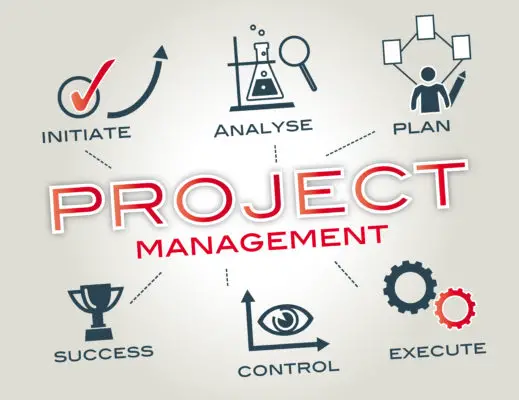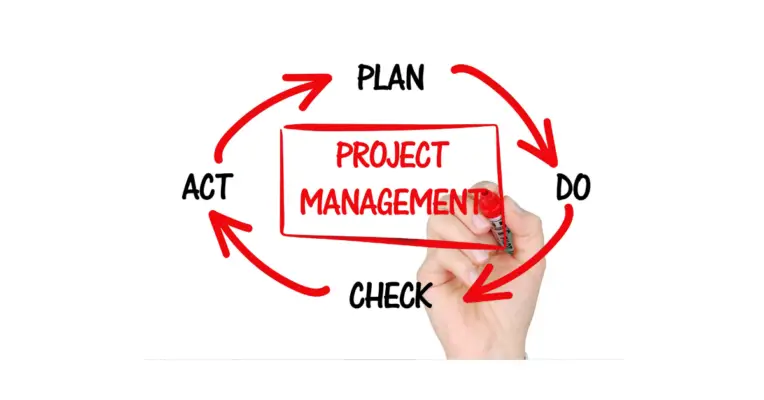This article provides an overview of the utilization of Confluence and Jira for project management purposes.
It begins by discussing the background of these software tools, highlighting their relevance in project management.
The article then explores the steps in setting up a project team and creating a knowledge base within the Confluence space.
Finally, it delves into the application of Jira for efficient project management.
This informative piece aims to equip readers with the necessary knowledge to utilize Confluence and Jira in their project management endeavors effectively.

Background on Confluence and Jira
The benefits of using both Confluence and Jira for project management are numerous.
Firstly, Confluence provides a platform for collaborative documentation, allowing teams to create, share, and modify project-related content in a centralized and easily accessible manner.
On the other hand, Jira offers powerful issue-tracking and project management capabilities, enabling teams to track tasks, assign responsibilities, and monitor progress effectively.
Benefits of Using Both
One potential advantage of utilizing Confluence and Jira for project management is the enhanced collaboration and integration between project documentation and task tracking.
Confluence is a collaboration tool, allowing project teams to create and share project documentation in a centralized location.
On the other hand, Jira software provides a robust task-tracking system that allows project managers to assign tasks, track progress, and manage workflows.
Project teams can benefit from the seamless integration of project documentation and task tracking by using both tools.
This integration ensures all team members can access the most up-to-date project information and easily track and manage their assigned tasks.
Furthermore, the documentation in Confluence can provide valuable context and information for tasks being tracked in Jira, improving communication and collaboration within the team.
This combination of Confluence and Jira is particularly beneficial in software development projects, where clear documentation and effective task tracking are crucial for project success.
| Confluence | Jira |
|---|---|
| Collaboration tool | Task tracking system |
| Centralized location for project documentation | Assign tasks and track progress |
| Share project information | Manage workflows |
| Provide valuable context for tasks | Improve communication and collaboration |
Setting Up a Project Team
This focuses on the key points involved in setting up a project team.
The first step is the identification of team members. This involves selecting individuals with the appropriate skills and expertise to contribute to the project’s success.
Next, it is important to establish goals and objectives. This helps provide a clear direction for the team and ensures everyone is working towards the same outcomes.
Once the goals and objectives are set, it is necessary to assign roles and responsibilities. This ensures that each team member knows their specific tasks and contributions to the project.
Finally, defining workflow processes is crucial. This helps to streamline the project’s execution and improve efficiency.
Identification of Team Members
To identify team members in project management using Confluence and Jira, it is essential to establish clear criteria for selection based on relevant skills and expertise.
Confluence and Jira provide users with a collaborative platform for efficient project management.
When identifying team members, it is important to consider their experience and proficiency in using these applications.
Time management skills are crucial as they ensure the timely completion of tasks. Additionally, considering the needs and requirements of customers and business teams is essential for successful project execution.
Confluence and Jira offer a range of features and solutions that facilitate effective communication and task allocation.
Creating a comprehensive list of options and selecting team members based on their ability to utilize these features, project managers can ensure the successful implementation of projects.
Establishing Goals and Objectives
When establishing goals and objectives in a project, it is important to carefully define specific and measurable targets that align with the overall project vision and meet stakeholders’ requirements.
This can be achieved using project management tools such as Confluence and Jira.
These tools provide a collaborative platform for teams to organize and track their projects effectively.
Some key benefits of using Confluence and Jira for goal setting include:
- Centralized Knowledge Base: Confluence allows teams to create a comprehensive knowledge base where all team members can document and access project goals and objectives.
- Issue Tracking: Jira Service Management provides a robust issue-tracking system, enabling teams to identify and address any obstacles or challenges during the project.
Moreover, these tools also facilitate the creation and tracking of action items, ensuring that tasks are assigned, monitored, and completed in a timely manner.
Confluence and Jira enable software teams and project admins to streamline their planning processes and enhance project outcomes.
Assigning Roles and Responsibilities
In project management, assigning roles and responsibilities is a crucial step in ensuring the successful execution of a project.
Jira and Confluence, popular project management tools, are significant in facilitating this process.
Jira allows project managers to create and manage tasks, assign them to team members, and track their progress.
Conversely, Confluence provides a collaborative platform for documenting project scope, creating pages, and organizing project information.
These tools can particularly benefit software development projects and agile project management teams, offering features specifically designed for these contexts.
When Jira and Confluence are used in conjunction, project managers can define clear roles and responsibilities, monitor progress, and maintain open communication throughout the project life cycle.
This seamless integration of tools streamlines project management and enhances overall project performance.
Let’s explore the importance of defining workflow processes in project management.
Defining Workflow Processes
Defining workflow processes involves establishing a structured framework that outlines the activities and tasks needed to complete a project.
This step is crucial in project management as it ensures a clear understanding of the project’s objectives and helps identify potential bottlenecks and dependencies.
When using Jira and Confluence for project management, the following aspects should be considered:
- Customization: Jira and Confluence provide extensive customization options to tailor the workflow processes according to the project’s specific needs.
- Issue-Tracking Tool: Jira is an efficient issue-tracking tool that allows teams to track and manage the progress of tasks and activities.
- Approval Workflows: Jira enables the creation of approval workflows, ensuring that critical tasks go through the necessary review and approval process.
- Binary Workflow: Confluence facilitates the collaboration aspect of workflow processes, allowing team members to contribute and review documents seamlessly.
- Application Servers: Jira and Confluence can be deployed on application servers to enhance performance and scalability.
- Knowledge Base Space: Confluence provides a dedicated knowledge base space, allowing teams to document and share project-related information effectively.
Creating a Knowledge Base in Confluence Space
This discussion will focus on three key points related to creating a knowledge base in a Confluence space.
Firstly, we will explore the process of adding documentation to the knowledge base, discussing best practices for organizing and categorizing information effectively.
Secondly, we will examine strategies for finding solutions to common problems within the knowledge base, including search functionalities and collaboration among team members.
Lastly, we will explore the various display options available for the knowledge base, considering factors such as accessibility, usability, and customization.

Adding Documentation to the Knowledge Base
To enhance the knowledge base, relevant documentation can be added to Confluence and Jira for improved project management. Here are some ways in which adding documentation can be beneficial:
- Confluence Space:
- Creating a dedicated space in Confluence allows for centralized storage of project-related documentation.
- It provides a structured and organized environment for team collaboration and knowledge sharing.
- Confluence App:
- The Confluence app allows easy product and technical documentation integration into the knowledge base.
- This ensures that all relevant information is readily accessible to team members.
By adding documentation to the knowledge base, project teams can easily refer to project plans, track issue types, and link issues from Confluence to Jira or Confluence pages.
This streamlines project management processes and ensures all team members can access the necessary information.
In the subsequent section, we will discuss finding solutions to common problems in project management.
Finding Solutions to Common Problems
Identifying effective strategies to address common challenges can greatly contribute to the success of project teams. When using Atlassian Confluence and Jira for project management, powerful tools are available to help find solutions to common problems.
One such tool is the chart feature in Atlassian Confluence. This feature allows users to create custom charts displaying various metrics related to project progress and individual tasks.
By utilizing the issue key in Jira, project teams can easily track and identify issues that must be addressed.
Additionally, the display options in the Confluence product provide various methods for presenting data and information, allowing teams to analyze and find solutions based on the count of issues or other relevant metrics.
These tools can assist project teams in effectively addressing common challenges and improving project outcomes.
Display Options for the Knowledge Base
The display options available in Atlassian Confluence’s chart feature offer a variety of ways to present data and information, allowing for effective analysis and identification of solutions based on relevant metrics.
These display options allow users to customize the appearance of charts and graphs in the knowledge base article section of Confluence. Here are two sub-lists highlighting the key features:
- Chart types:
- Bar charts.
- Line charts.
- Pie charts.
- Customization options:
- Color schemes
- Data labels
- Legend placement
These options enable users to create visually appealing and contextually relevant charts that enhance the understanding of the data presented.
By utilizing these display options, users can effectively communicate information and insights within the article section of Confluence.
This seamless integration between Confluence and Jira facilitates efficient project management by providing a comprehensive platform for collaboration, documentation, and data analysis.
Using Jira for Project Management
This will focus on several key points related to using Jira for project management.
Firstly, creating action items with issue keys allows for easy identification and tracking of specific tasks within a project.
Secondly, tracking individual tasks in single issues provides a comprehensive overview of progress and enables efficient monitoring of each team member’s contributions.
Lastly, assigning responsibilities to team members ensures clear accountability and facilitates effective collaboration throughout the project.
Creating Action Items with Issue Keys
To create action items with issue keys in Confluence and Jira for project management, users can link specific tasks to their corresponding issue keys to track progress and facilitate collaboration.
This integration allows for seamless coordination between the two platforms, enabling teams to manage their projects effectively.
Here are two key benefits of using issue keys in Confluence and Jira:
- Issue link: By linking tasks to their respective issue keys, users can quickly navigate between Confluence and Jira, ensuring that all relevant information is easily accessible.
- Table of issues: Users can create a table in Confluence, providing a comprehensive overview of the project’s tasks, their assigned owners, and status updates.
Tracking Individual Tasks in Single Issues
One effective approach for tracking individual tasks in single issues is to link specific tasks to their corresponding issue keys, allowing for easy navigation and comprehensive progress monitoring.
By integrating Confluence and Jira, project managers can efficiently manage their projects and track individual tasks within a single issue.
This ensures that all stakeholders know each Project administrator’s information status.
Project administrators can also customize workflows and project permissions to ensure tasks are assigned and tracked correctly.
By linking tasks to issue keys, project managers can generate individual status reports, providing a clear overview of the progress made on each task.
The following table illustrates an example of tracking individual tasks within a single issue.
| Task | Assignee | Status |
|---|---|---|
| Task 1 | User A | In Progress |
| Task 2 | User B | Completed |
| Task 3 | User C | Not Started |
| Task 4 | User D | In Progress |
This approach enhances project management efficiency and transparency, enabling effective tracking and monitoring of individual tasks within a single issue.
Assigning Responsibilities to Team Members
Assigning responsibilities to team members is an essential aspect of effective task management and ensures accountability within the project.
Assigning responsibilities becomes streamlined and efficient when using Confluence and Jira for project management.
Here are two key benefits of using these tools:
- Clear visibility: Confluence and Jira provide a platform where team members can easily access and view their assigned responsibilities. This ensures that everyone knows their tasks and can plan their work accordingly.
- Seamless collaboration: With Confluence and Jira, team members can collaborate seamlessly by commenting, discussing, and updating tasks in real time.
- This allows for effective communication and coordination, ensuring that responsibilities are fulfilled efficiently.
Frequently Asked Questions
How Do I Integrate Confluence and Jira for Seamless Project Management?
Integrating Confluence and Jira for seamless project management involves leveraging their complementary features. Confluence facilitates collaboration and documentation, while Jira offers issue tracking and task management, allowing for efficient project coordination and communication among team members.
Can I Use Confluence and Jira for Agile Project Management?
The use of Confluence and Jira for agile project management is a topic of interest.
Further exploration is needed to determine the compatibility and effectiveness of these tools in implementing agile methodologies.
What Are Some Best Practices for Organizing Content in Confluence for Effective Project Management?
Best practices for organizing content in Confluence for effective project management include creating a clear hierarchy of pages.
It also uses labels and categories to classify content, implements a consistent naming convention, and utilizes macros and templates for consistency and efficiency.
How Can I Track and Manage Project Tasks in Jira?
To track and manage project tasks in Jira, users can create and assign tasks, set due dates, and track progress using project boards and workflows.
This allows for efficient project management and collaboration among team members.
Is It Possible to Customize the Project Management Workflows in Jira to Fit My Team’s Specific Needs?
Customization of project management workflows in Jira can align with a team’s specific needs.
This allows for a tailored approach to task tracking and management, enhancing efficiency and adaptability in project management processes.

Conclusion
Teams can collaborate effectively and share important information by setting up a project team and creating a knowledge base in Confluence Space.
Jira further enhances project management by providing features for task tracking, issue management, and project planning.
Project managers can streamline their workflows, improve communication, and ultimately achieve project success by utilizing these tools.

Chris Ekai is a Risk Management expert with over 10 years of experience in the field. He has a Master’s(MSc) degree in Risk Management from University of Portsmouth and is a CPA and Finance professional. He currently works as a Content Manager at Risk Publishing, writing about Enterprise Risk Management, Business Continuity Management and Project Management.

